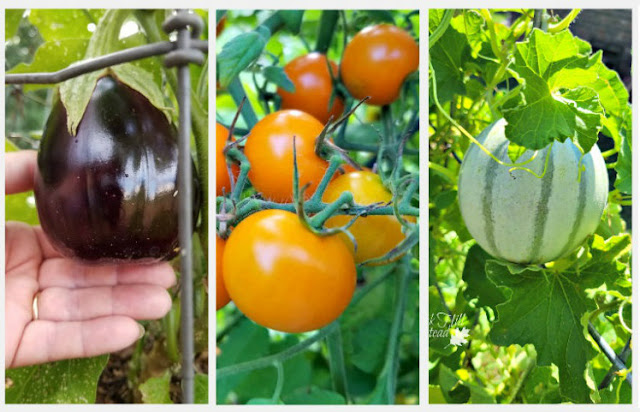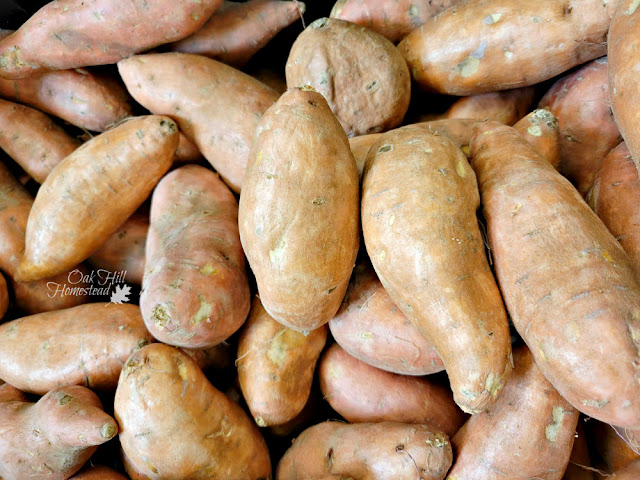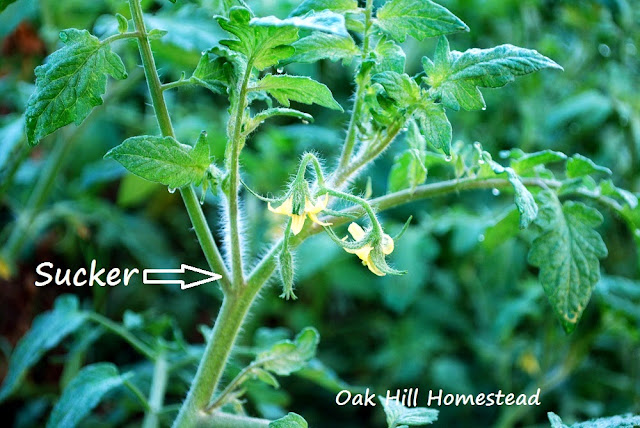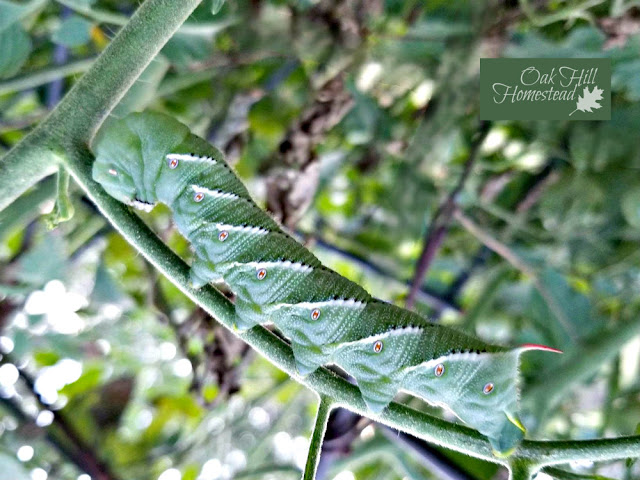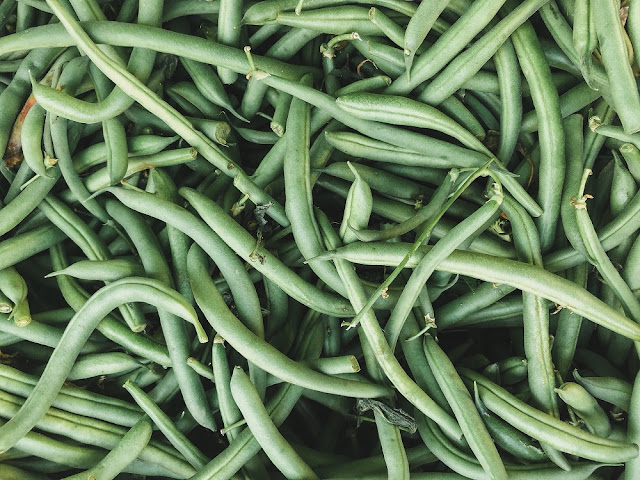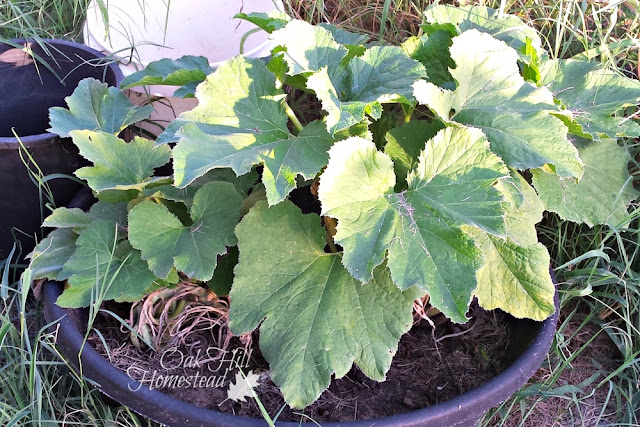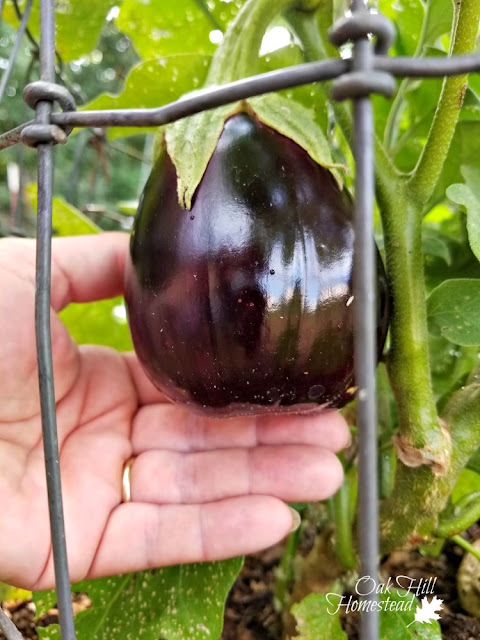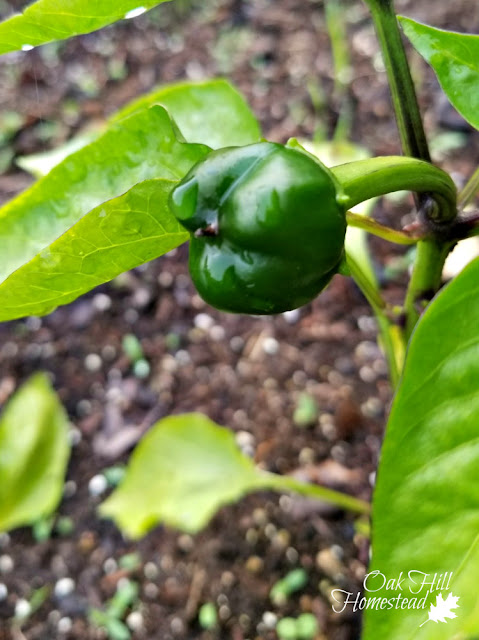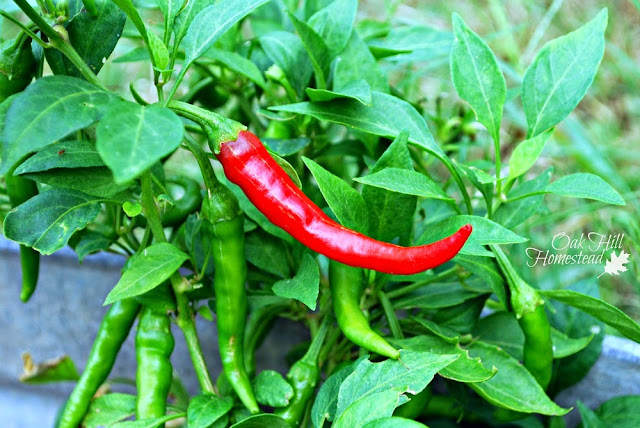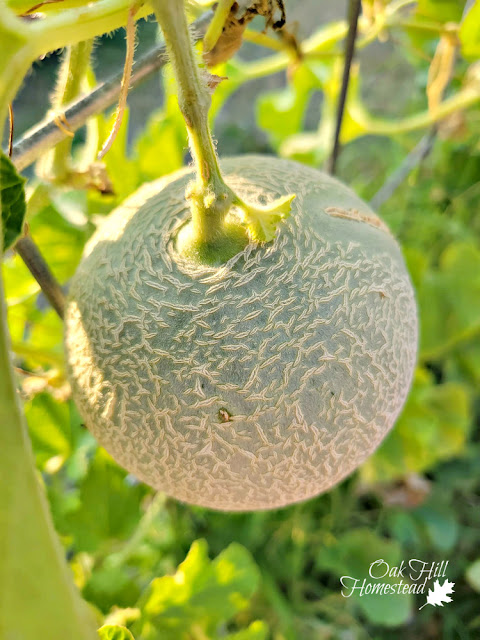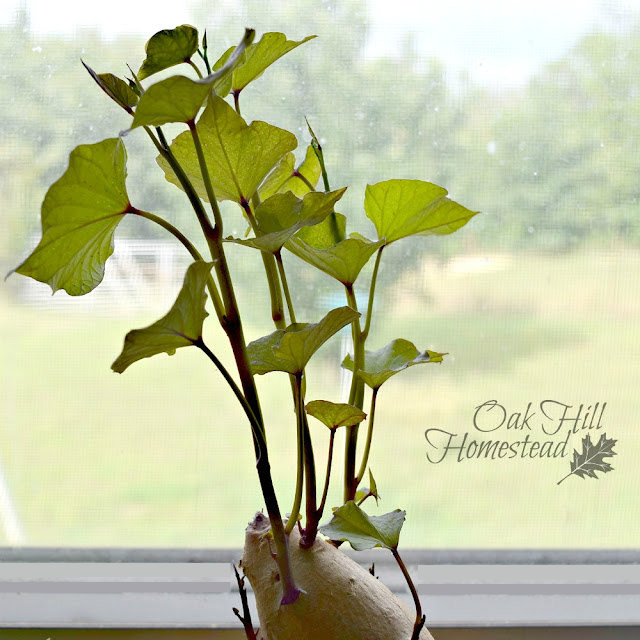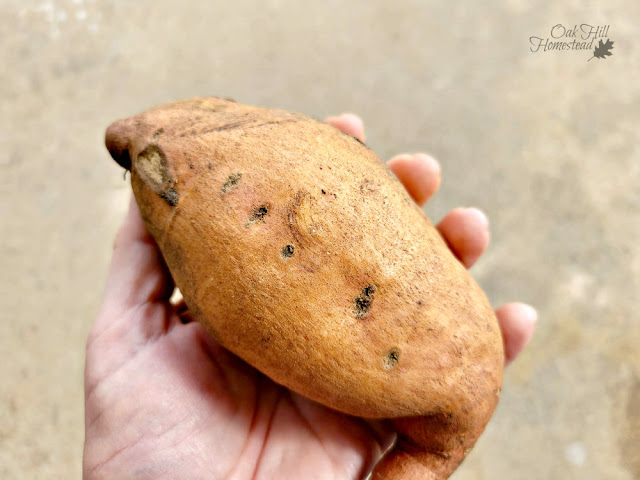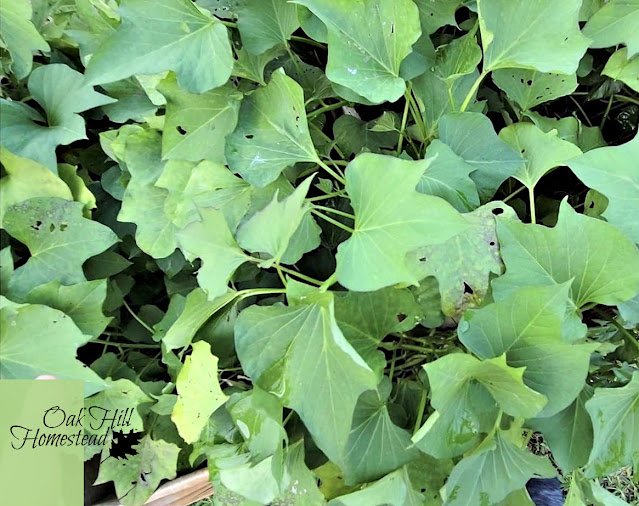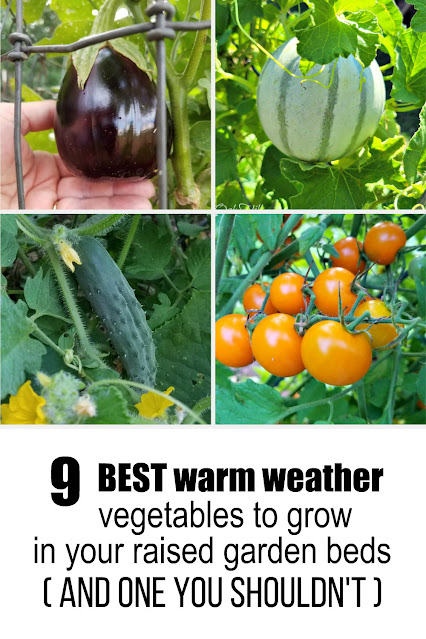As the temperatures start to climb, it's time to plant warm weather vegetables in your garden. These nine summer vegetables can thrive in hot summer weather with a little bit of extra care.
Use these tips and suggestions for growing these heat-loving veggies and enjoy a bountiful harvest all summer long.
These heat tolerant vegetables can all be grown in raised beds, containers or small gardens, making them great for beginners or for those with limited space.
9 Warm Weather Vegetables to Grow in Raised Beds
Listen on your favorite podcast player:
Apple Podcasts | Spotify | Episode Library
.
Warm weather vegetable plants thrive in the summer because they require the hot weather and soil conditions to grow and produce a good harvest.
Heat-loving plants like tomatoes, peppers, and eggplants thrive in warm soil and hot temperatures. Summer provides the ideal amount of heat and sunlight for these plants to grow and produce, resulting in a successful harvest.
On the other hand, cold weather crops like broccoli, lettuce, and carrots prefer cooler temperatures and shorter daylight hours, making them more difficult to grow during the summer months.
In order to maximize your summer harvest, it's important to choose heat-loving vegetables that are well-suited to hot weather conditions.
First, let's look at some tips for growing warm season vegetables in general, and how to maximize your summer harvest.
3 tips for growing warm weather vegetables
- Provide plenty of water. Warm weather vegetables need consistent moisture to thrive, so be sure to water regularly if your garden receives less than the recommended amount of rainfall. Hot dry weather and summer winds will dry out your soil quickly, so regular watering is a must.
- Use mulch: Mulching your plants can help keep the soil cool and retain moisture, which is especially important during hot weather. Compost, pine needles, dried grass clippings, shredded dry leaves and straw are excellent types of mulch for these summer garden plants. Use a 2-inch to 4-inch layer (coarser materials).
- Fertilize: Heat-loving vegetables benefit from regular fertilization, but be careful not to over-fertilize, as this can damage the plants. Use the appropriate type of fertilizer for your plants, and mix liquid fertilizers correctly.
How to maximize your heat-loving vegetable harvest
- Provide enough sunlight: Warm weather vegetables need at least six hours of direct sunlight per day in order to flower and produce.
- Harvest often: Leaving ripe vegetables on your plants not only results in overripe produce but also results in less produce. Harvesting regularly encourages plants to continue growing and to set more fruit. (Yes, I know we are talking about growing vegetables, but these plants actually produce “fruits.”)
A vegetable plant’s life cycle is to grow, and to produce fruit which will then ripen and produce seeds. After that is accomplished, the plant dies. Harvesting regularly removes those vegetables that would eventually produce seeds, so the plant continues to produce. - Know how much space your plants will need and plan your garden layout accordingly. Some hot-weather vegetables need a lot of room, such as melons, pumpkins and winter squash. Be sure to allow them the space they need in order to produce well.
The 9 best heat-loving vegetables to grow in raised beds [and one that perhaps you shouldn't]
These nine vegetables love warm weather and are perfect additions to your summer garden. They are ideal for growing in raised beds and small spaces - but we will also discuss another favorite summer vegetable and why it isn't as well-suited to this situation.
Tomatoes
Tomatoes might be the reason most people start growing vegetables in their home gardens. Who can resist the flavor of a vine-ripened tomato that you grew yourself? My young grandson and I eat cherry tomatoes right off the vines in the summer - no salt shaker needed.
Tomatoes love the summer heat and can produce a large yield if you pay attention to their simple needs: consistent watering and enough space for air to flow freely between the plants.
Many gardeners remove the suckers from their tomato plants - the small, new branches that grow between the main stem and the branches. By checking the main stem, you’ll notice that the branches of leaves form a “Y” with a new set of leaves growing in the Y.
By removing the suckers, the plant will direct its energy into producing fruit instead of more leaves and branches. An unpruned tomato plant can get out of hand quickly, turning into a jungle of uncontrolled growth! You can read more about removing tomato suckers here.
Your tomato plants should be trellised in some way to keep them up off of the ground. This not only saves space in your garden, allowing you to grow more vegetable plants, but will also keep the tomatoes safer from insect pests and from rotting where they touch the ground. They will also be easier to see and harvest.
Regular watering is especially important to tomato plants. The fruit tend to crack when the plants are watered inconsistently.
The most common pest on tomato plants is the hornworm. These caterpillars can be easily spotted at night with a black light flashlight ( ⬅ that's the one I use) - because they glow in the UV light!
Green beans
Green beans are easy to grow in the summer and will produce a bountiful crop. Near the end of the season some of my friends have been known to say “I wish my beans would just STOP!”
Green beans are easy to grow, and need a minimum of care. They prefer slightly acidic soil (about 6.0 pH) and are pretty heat resistant.
Beans planted in a normally-rich soil can produce beans without added fertilizer, since the plants produce their own nitrogen.
In fact, beans replace the nitrogen in soil that has been used by previous crops, so they are excellent to plant in ground that grew fruiting varieties the previous year such as tomatoes and peppers.
Beans need 6-8 hours of sun. They love well-drained soil and require about two inches of water per week. Be sure to water the roots and the soil, not the plants themselves. Mulch the soil to retain moisture.
High temperatures can cause the blossoms to drop off of bean plants, so you may need to use shade covers if you have a particularly hot summer.
Bush beans mature slightly faster than pole bean varieties. Harvest when the pods are 4-6” long and slightly firm. Gently pull the bean pods from the plant. Harvest often to promote a bigger harvest.
Sow more beans every two weeks to provide a continuing harvest.
For more information about pests that affect green beans and how to combat them, read this article from North Carolina Extension.
Cucumbers
Cucumbers are fast-growing and produce well during hot weather.
Cucumber plants are either bush type or vining type. Bush varieties are more compact plants, while vining varieties require a trellis and will grow upwards. Bush cucumbers are ideal for growing in containers, but vining types can be space-saving when grown up a trellis.
Check your cucumber plants often for ripe fruit. Cucumbers are best picked when small. The skin should be dark green and the fruit should be firm. It’s easy for cucumbers to get away from you. When they are too mature they will be soft with yellow skin and large seeds.
Water cucumber plants consistently to keep the soil moist but not wet. You can fertilize them with a high-nitrogen fertilizer about every two weeks.
While cucumbers like the heat, they can be prone to sunburn. If you live in a very hot climate they can appreciate some afternoon shade.
Watch for cucumber beetles. You can read about cucumber beetles in the home garden here.
Zucchini and summer squash
Most summer squash such as zucchini are very prolific and withstand hot temperatures well. Summer squash are harvested during the warm season while the rind is still soft, unlike winter squash which is harvested in the fall when the rind is hard.
Zucchini loves warmth, so plant seeds directly in your garden or transplant your starter plants after the soil temperature is above 68°. They’ll thrive in the heat but will sit and sulk if the weather is below 60°.
Zucchini is a compact plant that grows well on the ground with no trellising needed, although some gardeners train them to grow upwards in a tomato cage, which allows the bottom leaves to be up off the ground and less likely to be affected by fungus and mildew.
Water summer squash with 1-2” of water per week.
Zucchini produce fruit prolifically and the fruits seem to grow and ripen overnight. Inspect your plants daily and harvest any that are about 6-8” long. Smaller squash are more tender.
The more zucchini you pick, the more your plants will produce.
Watch for squash beetles, squash vine borers and cucumber beetles when growing summer squash. The picture above shows squash bug (beetle) eggs laid on the underside of the leaves.
Eggplant
Eggplant is a delicious, low-calorie vegetable that’s high fiber and contains small amounts of many vitamins and nutrients. The plants love rich soil that’s high in organic matter.
Dwarf varieties are perfect for small spaces and containers, but the full-size plants are very manageable too.
Plant eggplant in the garden in late spring after the last threat of frost has passed and the soil temperature is at least 50°F. They do not like to be transplanted, so planting the seeds directly is the best option. If you do need to transplant eggplant, do so very gently with as little root disturbance as possible.
Use cages or stakes to support the mature plants. Those ripening fruits are heavy and can make the plant fall over.
.
Eggplant needs about 1” of water per week.
To harvest, cut the fruit off of the plant, don’t pull or tear them from the stems. Harvest regularly so the plants will continue to produce through the growing season.
Watch for flea beetles, mites and aphids.
Peppers
There are many varieties of peppers, such as bell or sweet peppers, jalapenos, and chili peppers. They come in a wide variety of colors and shapes, and they all love the summer warmth.
Peppers are high in vitamin C, and also contain vitamin A and additional minerals. Enjoy peppers raw in salads, as a snack with dip, or stuffed and baked.
Transplant pepper plants to the garden about 2-3 weeks after the last frost. They don’t mind being transplanted, so you can start seeds indoors about 6 weeks before the last frost or purchase started plants at the local nursery if you have a short growing season.
Peppers need at least 6-8 hours of sunlight daily in order to grow and produce a good harvest. They enjoy rich well-draining soil that includes lots of organic matter.
Water regularly throughout the season, but let the soil dry out between waterings. Water the roots and the soil, keeping water off the leaves.
Staking pepper plants can be helpful later on when the fruits are heavy. I've also used tomato cages for this purpose.
Although they love warmth, peppers are heat sensitive. If the temperature gets too hot (above 85-90 degrees Fahrenheit), or too cold at night, or if they have inadequate water, they can drop their blossoms and won’t produce fruit. Shade covers can help avoid heat stress and sunscald if needed.
Harvest peppers when they reach their full size and mature color. Green bell peppers are actually immature red peppers, so choose whichever color you prefer to eat.
Regular harvesting helps to produce more fruits. Harvest by cutting the fruits from the plant, not pulling or tearing.
Watch for spider mites and aphids, Colorado potato beetles, flea beetles, leaf miners, and tomato hornworms.
Learn more about growing and preserving peppers here: Homemade Cayenne Pepper Powder, and how to make a delicious sweet chili jam here.
Okra
This Southern favorite thrives in hot weather and produces an abundance of edible pods.
Okra needs warm weather and warm soil. Wait to plant okra for at least two weeks after your last frost date.
Okra seeds have a thick seed coat and need to be soaked in warm water overnight before planting, Sow the seeds 12-18” apart - okra is a large plant and needs space to grow. Okra isn’t too picky about the soil type as long as it is well-draining.
Okra doesn’t like to have its roots disturbed so it’s best to plant the seeds directly in the garden instead of transplanting started seeds.
Okra needs up to 8 hours of full sun daily. During extremely hot weather you might need to provide shade cloth if your plants appear to be wilting or the leaves look burned.
Give okra about an inch of water every 7-10 days. Water more often in very hot, dry climates or if you have a heatwave.
Okra pods appear about two months after planting. Harvest the pods when they are 2-3 inches long. Cut the stem just above the pod. Wear gloves when harvesting, because the pods have tiny spines that are irritating to skin.
Watch for aphids and stink bugs, cabbage worms and flea beetles, although okra isn’t usually bothered much by insects. Hand pick these insects or knock them off the plants with a good stream of water from the hose if needed.
Melons
Watermelons, cantaloupes, and honeydews are all great options for summer gardens. Melons are quite easy to grow. They need about 100 frost free days to produce fruit.
If you have a shorter growing season, you’ll need to start your melon plants indoors about 2-4 weeks before the last spring frost.
Melons are closely related to cucumbers and have similar growing requirements. They prefer well-drained, sandy/loamy soil with a pH between 6 and 6.5. Soil with a pH less than 6.0 will produce few or no fruit.
Melons need lots of space, depending on the variety. Each vine produces 2-4 melons on average. Smaller melons can be grown on a trellis to save space but need support for the fruits.
Keep the soil moist but not wet, giving your melon plants 1-2” of water weekly. Avoid wetting the leaves of the plants, watering the soil and roots only.
Watch for aphids, squash bugs, squash vine borers, whiteflies and melonworms. However, my biggest pest is ants!
Learn organic methods for dealing with squash bugs here.
Sweet potatoes
Sweet potatoes are a delicious and nutritious vegetable that are very easy to grow. The vines are attractive and the leaves are also edible.
Other than regular watering and weeding - although the prolific vines do a good job of suppressing any weeds - sweet potatoes need very little attention.
Sweet potatoes are grown from slips, not seeds. Slips are easy to start at home with a single sweet potato in a jar of water (interlink).
When the slips are about 4 inches tall remove them carefully from the potato and let them root in another glass of water until planting.
Read more about starting your own sweet potato slips in water.
Wait until the soil has warmed to at least 60°F before planting the sweet potato slips in loose, deep, well-draining soil. You can also plant the “parent” potato that the slips grew on. Allow about 12-18 inches between each plant.
The loose, deep soil will give the sweet potato tubers plenty of room to form underground. Deep raised beds are an ideal choice for growing sweet potatoes, but I've also grown them in heavy cardboard boxes and in Rubbermaid bins.
This article will tell you more about growing sweet potatoes in containers including boxes and bins.
Water sweet potato plants regularly, giving them about an inch of water every week and keeping the soil evenly moist. Water more often when the weather is extremely hot.
Sweet potato plants might flower, and will then produce a small green fruit that looks similar to a tomato, which is inedible. It isn't necessary for sweet potato plants to flower in order for the tubers to be ripe and ready to harvest, though, and flowering has no bearing on when the tubers are ready to harvest.
When the leaves begin to turn slightly yellow, about 90-120 days after planting, sweet potatoes are ready to harvest. Dig them up carefully as the thin skins on the tubers are easily damaged by a shovel or garden fork.
Let your sweet potato crop cure and store them in a cool, dry place for several weeks to allow the flavor to develop before eating. Be sure to save a few tubers to use in late winter to grow next year’s slips.
Learn about sweet potato pests here.
Sweet Corn
Sweet corn is a heat-loving vegetable that's very popular with home gardeners, but it’s not an ideal vegetable to grow in raised beds or containers.
Most new gardeners try to mimic the way corn is planted in large fields - in straight rows. Because corn is wind-pollinated - the pollen is carried by the wind from plant to plant - it’s best to plant corn in blocks instead of rows.
So instead of planting one row of sweet corn in a raised garden bed with other vegetables planted alongside, plant the entire bed in corn. The more corn you plant and grow, the better your harvest will be because the wind will be able to pollinate them more thoroughly.
Each corn stalk typically produces just one ear per plant. Occasionally a second ear will grow below the first one, but it’s very rare to harvest more than one or two ears of corn per plant.
For these reasons, many small gardeners prefer to use their garden space to grow better-producing summer crops.
Corn earworm is the most common pest that damages sweet corn.
Where I buy my seeds
I buy my seeds from Mary's Heirloom Seeds and from Baker Creek Heirloom Seeds.
I shop at Mary's Heirloom Seeds first, so I can help support a small business. Mary sells seeds that are sourced from small-family farmers and seed growers within the US to provide clean, healthy seeds. All of their seeds are un-treated, non-hybrid, open-pollinated, non-gmo, heirloom seeds.
If I can't find a particular variety that I'm looking for at Mary's Heirloom Seeds, I shop at Baker Creek Heirloom Seeds. They carry a very large variety of heirloom seeds.
What's in your summer garden?
Growing warm weather vegetables can be a fun and rewarding experience for any gardener, regardless of your level of experience.
With the right soil, sunlight, and care, you can enjoy a bountiful harvest of delicious and nutritious produce that's perfect for summertime meals. Why not give it a try and add some of these warm weather vegetables to your garden this season?
For more self-sufficient posts like this, subscribe to my weekly newsletter The Acorn, and join me on Facebook, Instagram and Pinterest.

